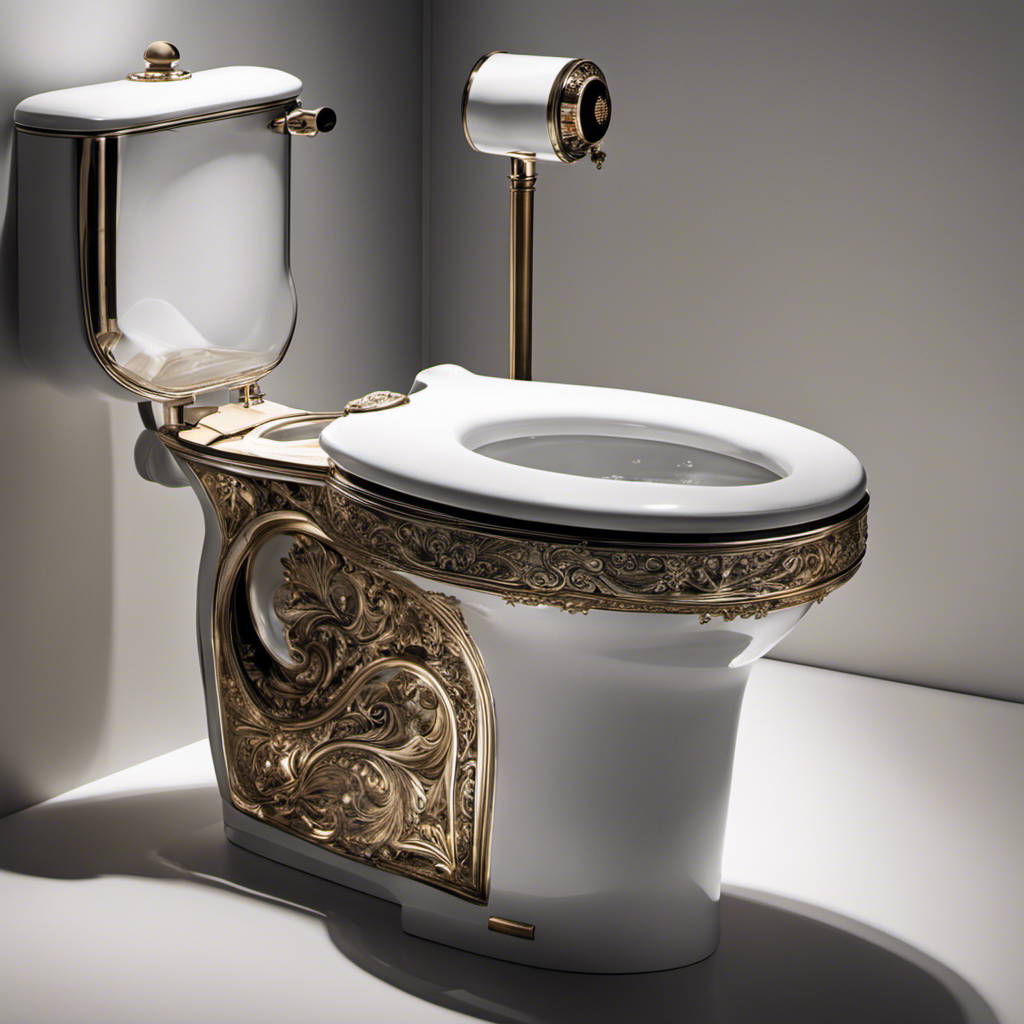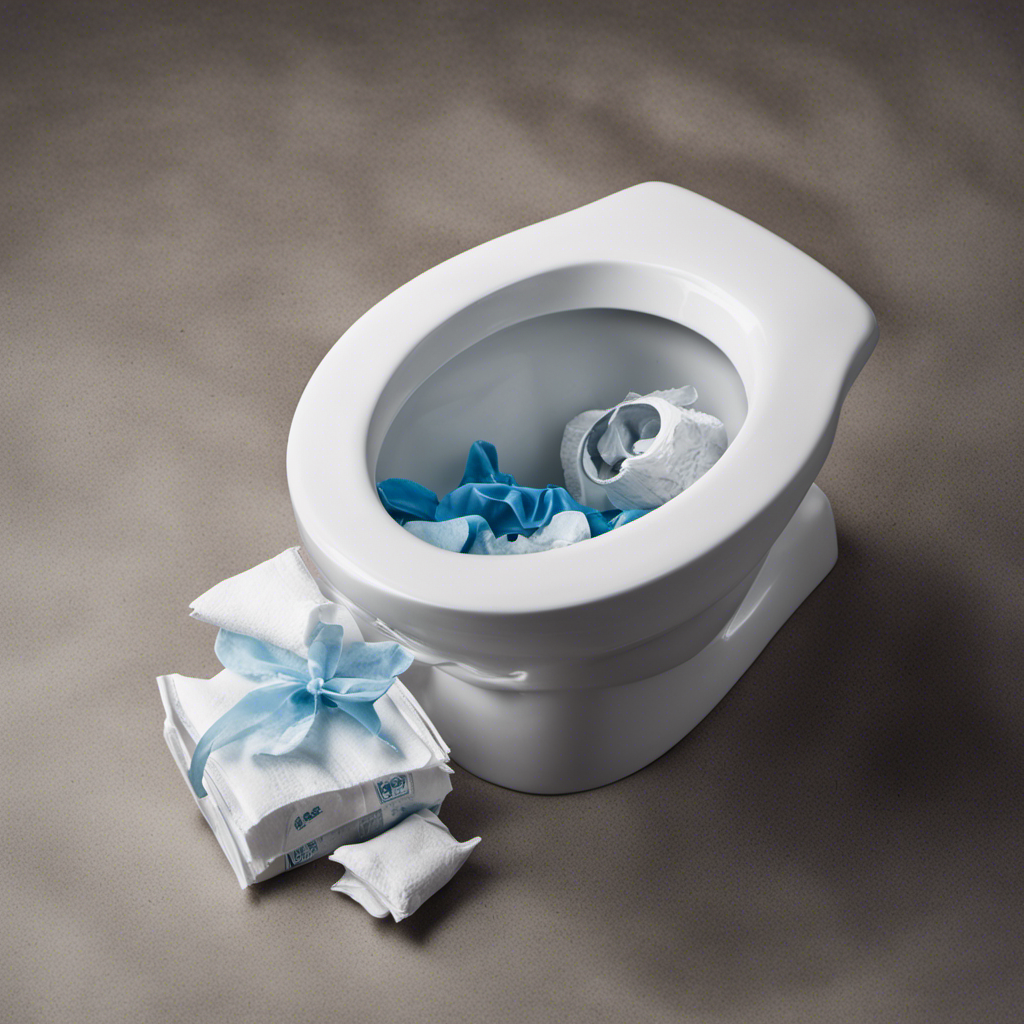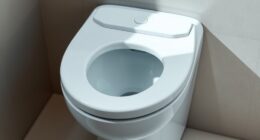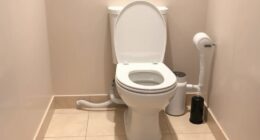I’ve had this problem in my own bathroom before, and let me tell you, it can be quite frustrating. You flush the toilet, but instead of the water stopping, it just keeps running. Not only is it annoying to listen to, but it can also waste a significant amount of water over time.
In this article, I will delve into the common causes of a running toilet, how to identify a faulty toilet flapper, steps to adjust the water level in the tank, troubleshooting tips for fill valve issues, and the importance of regular toilet maintenance to prevent this issue from happening again.
Key Takeaways
- A faulty flapper valve or a worn out/damaged flapper valve is a common cause of a running toilet.
- A continuous flow of water in the toilet bowl, water constantly running into the bowl, weak or incomplete flush, and water leaking around the base are signs of a faulty toilet flapper.
- Adjusting the water level in the toilet tank can help prevent a running toilet. This can be done by checking if the water level is too high or too low, locating the fill valve, and turning the adjustment screw clockwise to lower the water level or counterclockwise to raise it.
- Regular toilet maintenance is important to prevent a running toilet as it helps detect and address issues, prevents water wastage and increased water bills, avoids potential damage to internal mechanisms, and eliminates the annoying sound of running water.
Common Causes of Toilet Running After Flushing
One common cause of your toilet running after you flush is a faulty flapper valve. The flapper valve is a rubber seal that sits at the bottom of the toilet tank and is responsible for controlling the flow of water into the bowl. When the flapper valve becomes worn out or damaged, it may not create a proper seal, leading to water continuously leaking from the tank into the bowl. This can result in a constant running sound from your toilet.
Luckily, this is a problem that can often be easily fixed with some DIY toilet repairs. In the next section, I will explain how to identify a faulty toilet flapper and provide step-by-step instructions on how to replace it.
How to Identify a Faulty Toilet Flapper
To identify a faulty toilet flapper, start by checking if there is a continuous flow of water in the toilet bowl. If there is, it’s a clear sign that the flapper is not sealing properly. Here are some other signs of a malfunctioning flapper:
-
Water constantly running into the bowl: If you hear the sound of water running even after you’ve flushed, it could be due to a flapper that doesn’t close properly.
-
Weak or incomplete flush: If your toilet doesn’t seem to flush as efficiently as it used to, it could be because the flapper is not opening fully.
-
Water leaking around the base: If you notice water pooling around the base of your toilet, it may be due to a faulty flapper that is allowing water to escape.
If you are experiencing any of these issues, it may be time for a toilet flapper replacement. Replacing the flapper is a relatively simple and inexpensive fix that can help restore your toilet’s proper functioning.
Steps to Adjust the Water Level in the Toilet Tank
Check if the water level in your toilet tank is too high or too low to ensure proper functioning.
To adjust the water level, start by locating the fill valve, which is usually on the left side of the tank. Turn the adjustment screw clockwise to lower the water level or counterclockwise to raise it. Make small adjustments and flush the toilet to check if the water level is now at the desired height.
If the water level is too high, it can cause water to constantly run into the overflow tube, leading to wasted water and a higher water bill. On the other hand, if the water level is too low, you may experience weak flushes.
Regular toilet tank cleaning and DIY toilet repairs, such as adjusting the water level, can help maintain the proper functioning of your toilet.
Now let’s move on to troubleshooting tips for toilet fill valve issues.
Troubleshooting Tips for Toilet Fill Valve Issues
If the water level in your toilet tank is constantly fluctuating, it may be a sign of a faulty fill valve. The fill valve is responsible for regulating the water level in the tank after each flush.
Here are some signs that indicate a worn out toilet fill valve:
-
Continuous running water: If you hear water running in the tank even when the toilet is not in use, it could be a sign of a faulty fill valve.
-
Inconsistent water levels: If the water level in the tank is too low or too high after each flush, it could be due to a faulty fill valve.
-
Slow tank refill: If it takes longer than usual for the tank to refill after flushing, it may be a result of a worn out fill valve.
To resolve these issues, a toilet fill valve replacement is necessary. Regular maintenance is crucial to prevent running toilets and costly water wastage.
Importance of Regular Toilet Maintenance to Prevent Running
Regular toilet maintenance is crucial for preventing issues with a constantly running toilet. Neglecting toilet maintenance can have serious consequences and lead to various problems.
One of the main benefits of regular toilet maintenance is that it helps in detecting and addressing any issues with the toilet’s fill valve or flapper, which are often the culprits behind a running toilet. By regularly inspecting and cleaning these components, you can ensure that they are functioning properly and prevent water wastage.
Ignoring a running toilet can result in a significant increase in your water bill, as well as potential damage to the toilet’s internal mechanisms. Additionally, the constant sound of water running can be annoying and disruptive.
Therefore, it is important to prioritize regular toilet maintenance to avoid the consequences of ignoring a running toilet.
Frequently Asked Questions
How Can I Fix a Running Toilet if the Issue Is Not Related to the Toilet Flapper or Fill Valve?
If the issue is not with the toilet flapper or fill valve, it could be due to a problem with the water pressure in the toilet tank. Check for any blockages or leaks that could be causing the running toilet.
Can a Running Toilet Cause an Increase in My Water Bill?
A running toilet can definitely cause an increase in water usage, which in turn can impact your monthly expenses. It’s important to fix the issue promptly to avoid any unnecessary costs.
Is It Possible for a Running Toilet to Cause Damage to My Bathroom Flooring or Walls?
It’s possible for a running toilet to cause water damage to bathroom flooring and walls. If not repaired promptly, the constant flow of water can leak and seep into the surrounding areas, leading to costly repairs.
Are There Any Health or Safety Risks Associated With a Continuously Running Toilet?
Health risks and safety hazards can arise from a continuously running toilet. The constant flow of water can lead to mold growth, water damage, and increased water bills. Prompt repairs are crucial to avoid these issues.
Can a Running Toilet Be a Sign of a More Serious Plumbing Problem?
A running toilet can be a sign of a more serious plumbing problem. It may indicate a faulty flapper valve or a problem with the fill valve. A plumbing inspection can help diagnose and fix the issue, ensuring water conservation.
Conclusion
In conclusion, dealing with a running toilet can be quite frustrating, but understanding the common causes and knowing how to fix them can save you time and money.
Just like a master plumber, you can become the hero of your own bathroom, defeating the relentless flow of water with your newfound knowledge.
So grab your tools and dive into the intricate workings of your toilet, because with a little bit of patience and know-how, you can conquer the running toilet and restore peace and tranquility to your bathroom kingdom.










